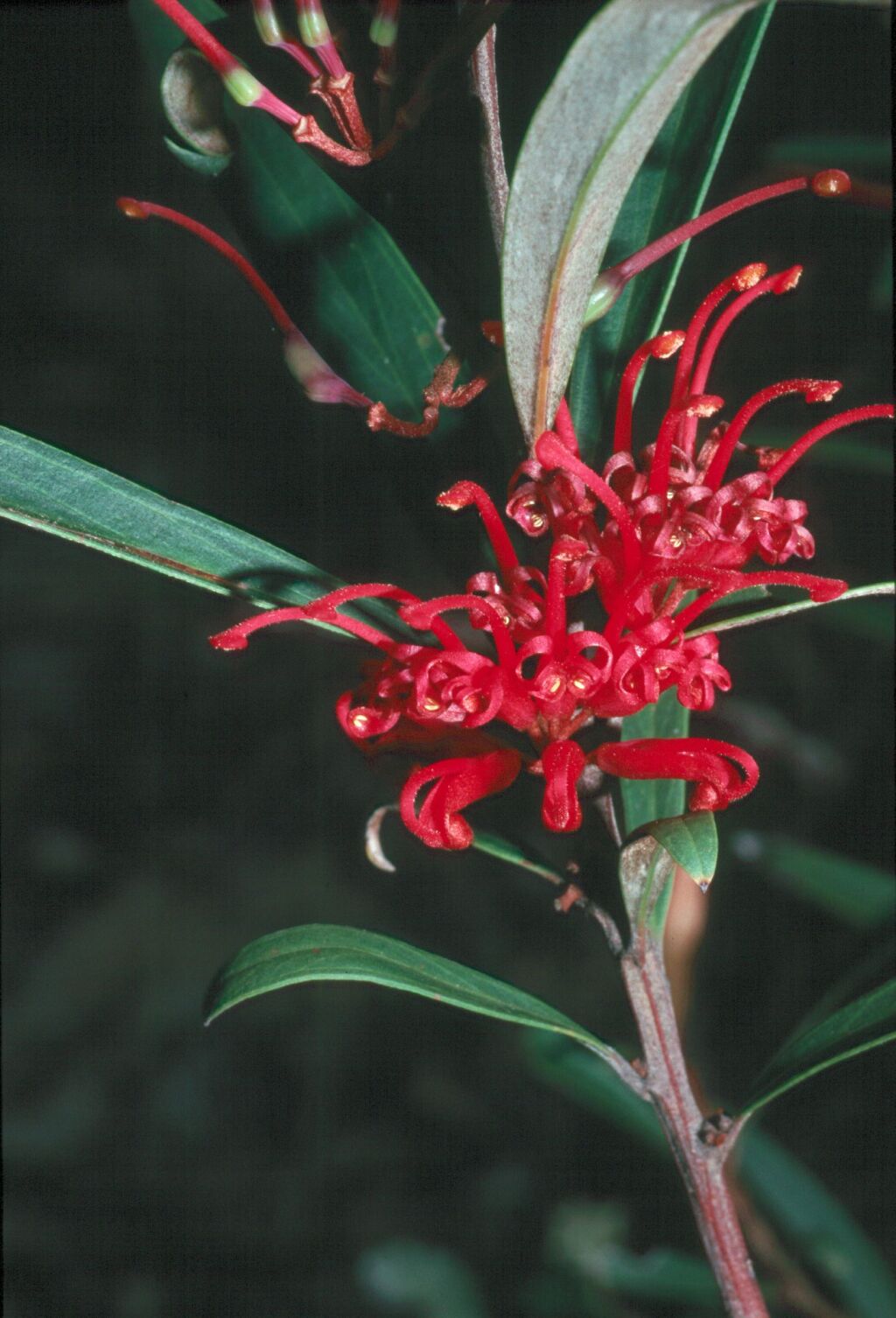Grevillea dimorpha
F.Muell. Flame GrevilleaErect to spreading shrub to c. 3 m high. Leaves simple and entire, elliptic to linear or narrowly obovate, 5–15 cm long, 1.5–40 mm wide; lower surface subsericeous; margin recurved or shortly revolute. Conflorescences axillary or cauline, rarely terminal on short lateral branchlets, usually simple; unit conflorescences usually decurved, subsecund; ultimate rachises (1–)2–12 mm long, tomentose to villous or occasionally subsericeous; perianth bright red, outer surface subsericeous to tomentose or loosely so, inner surface bearded; pistil 21–26 mm long, ovary stipitate, glabrous, style bright red, usually with short scattered erect hairs within 1–15 mm from the apex, pollen-presenter oblique. Fruits glabrous. Flowers mainly Aug–Dec.
VVP, GipP, Gold, CVU, GGr, DunT, EGU. Endemic in the Grampians, growing in moister areas of dry sclerophyll forest or heath. Sandy soils on sandstone.
Grevillea dimorpha was reduced by McGillivray (1986, 1993) to one of three subspecies of G. speciosa (Knight) McGill, with G. oleoides Sieber ex Schultes & Schultes f. similarly treated (both the latter are Sydney Basin endemics).
McGillivray & Makinson (1993) and Olde & Marriott (1995a) both discuss aspects of variation; in relation to habit and leaf form these variants are to some degree identifiable with discrete geographical populations within the range.
Makinson, R.O. (1996). Grevillea. In: Walsh, N.G.; Entwisle, T.J., Flora of Victoria Vol. 3, Dicotyledons Winteraceae to Myrtaceae, pp. 845–870. Inkata Press, Melbourne.
 Spinning
SpinningMcGillivray, D.J.; Makinson, R.O. (1993). Grevillea, Proteaceae: a taxonomic revision. Melbourne University Press, at the Miegunyah Press.
Olde, P.; Marriott, N. (1995). The Grevillea Book. Kangaroo Press, Kenhurst, NSW, Australia.


